last modified: 2018-10-18

| This lesson makes use of many diagrams and extracts from the book entitled "Entreprise IoT" by Dirk Slama et al (2015), because this book is exceptionally clear and well written. I recommend that you read the full book to get a complete picture of the topic. |
1. Internet of Things, connected objects?
The Internet of things (IoT) is the inter-networking of physical devices, vehicles (also referred to as "connected devices" and "smart devices"), buildings, and other items embedded with electronics, software, sensors, actuators, and network connectivity which enable these objects to collect and exchange data.
entry "Internet of Things" visited on 2017/08/01
Some comments on this definition:
-
we are familiar with Internet used to transmit information from computer to computer (sending an email, visiting a web page…)
-
the expression "Internet of things" insists on a different kind of use: what if we could connect any object (not just computers or smartphones) to the Internet?
The idea to connect objects to the Internet is not new: professors connected a Coke Machine to Internet in the late 1970s or early 1980s, so that they could check from their computers if it was empty or not.[1]
Once we understand what is the "Internet of things", the meaning of "connected objects" is clear: these are the objects connected to this network.
What about "smart objects?".
This is a synonymous to connected objects, where "smart" insists that the object can have a richer set of functions thanks to being connected to the Internet. It can even improve its features (for example, a car driving faster), thanks to updates made to its software through the Internet.
Starting in the 2000s, we moved from small, fun experiments to the development of an entire industry based on this concept of connecting things to the Internet. With decreasing costs for creating connecting objects, and easier protocols to connect (like Wifi, bluetooth and others, which appeared in the late 1990s), connected objects started to become interesting playground for serious innovation.
2. The anatomy of a connected object
a. the object can receive and send data, like this Thermostat:
The thermostat sends temperature measurements to your smartphone, and receives instructions from you (to decrease or increase the temperature).
b. The object can be just an emitter
A connected object can just broadcast some information without receiving anything.
If the object is sending data, it supposes it has a sensor to measure things around it, so that it can then send this measure. Sensors are pieces of electronic equipment, often quite tiny. The list of sensors is immense and this is just a small sample:
Sending data can be done in several ways:
-
the object sends data at predetermined intervals, like these connected beehives built by emlyon students and now producing honey on the roof of the school. They send pictures / temperature measures every minute or so:

-
or the object sends a signal continuously but is received only when somebody walks by, for example when you walk next to it. In this case the object is called a beacon. It is used in stores to interact with shoppers:
c. The object can be just a receiver
In this case, the connected object can display some information that it receives from the network it is connected to. This is the kind of objects we are going to build in this course: an object which receives data about air pollution, and shows it on a screen. Check the small screen in the middle of it!

|
Connected objects which receive data can do many things with it, not just showing stuff on screen. The connected object can move, compute things, make sound or light… everything is possible. → Robots? These are big connected objects! |
d. When the object can connect… to another object
This is called a "swarm": when multiple objects can coordinate their actions by connecting with each other, instead of connected separately to a central point.
Connected objects can coordinate to move together and perform a common action (like moving a child!), or just exchange data.
3. The value brought by IoT
What do connected objects bring to the table?
a. The customer perspective
-
IoT bring new features to existing products:
→ example: a scale by Nokia, which tracks your weight but also pulsations.
→ scales existed before, the connected object adds features to it.

-
Iot create radically new products:
→ example: a wrist band, pdfwidth="50%"
→ Wristbands existed but only for esthetic reasons or for time keeping. Connected wristbands provide a new kind of utility which transforms the core function of wristbands (health and performance monitoring).
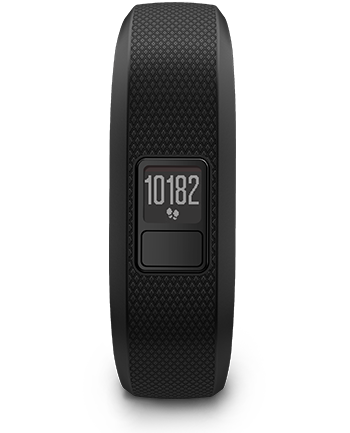
-
IoT create radically new products which in turn open up new ecosystems:
→ example: Amazon Echo
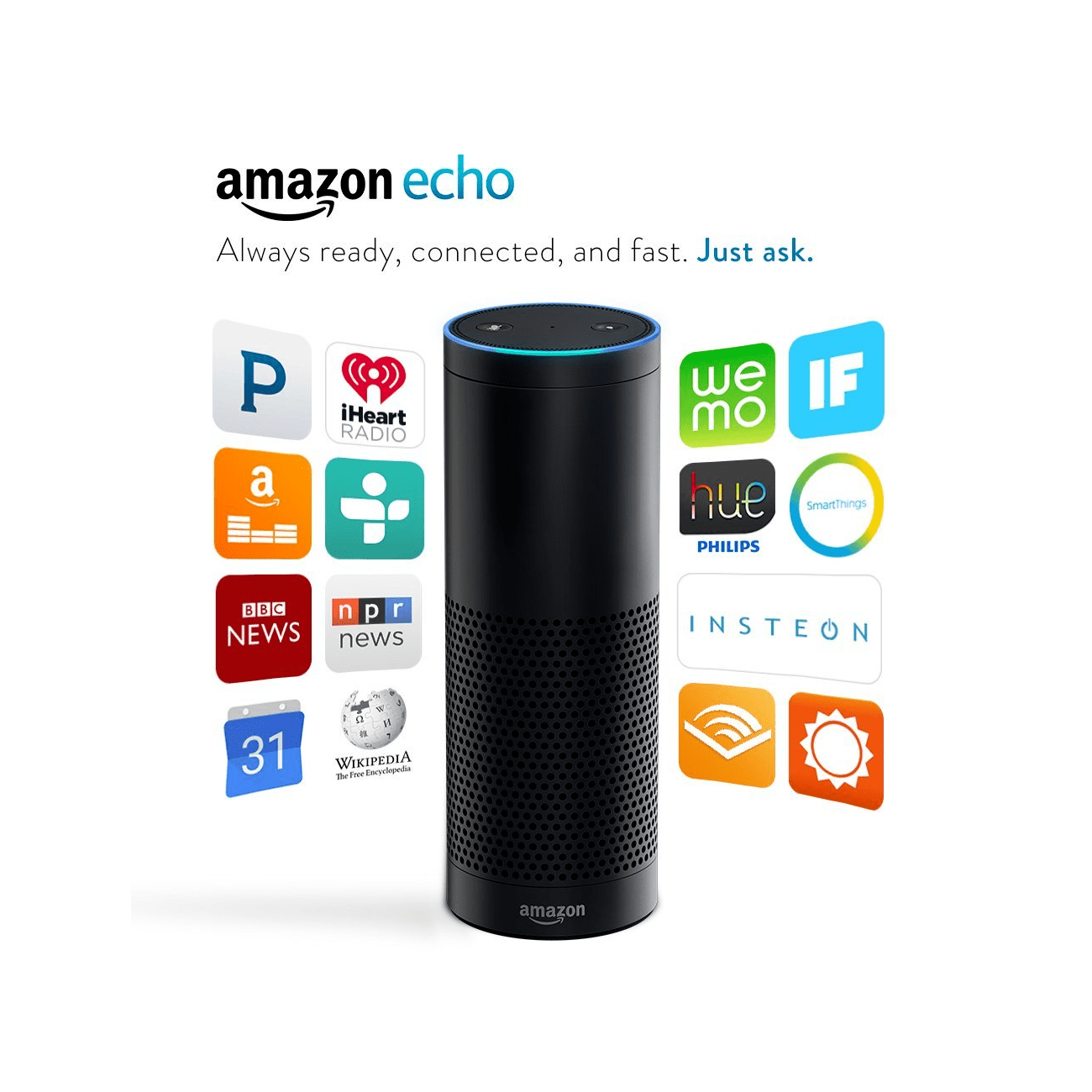
→ Amazon Echo is a new product, which opens up a series of potential broad innovations:
-
new communication channels
-
new distribution channels
-
new types of interfaces
b. B2B: the manufacturing or production perspective
Most manufacturers today hear very little about their products once they leave the factory. In fact, this was traditionally seen as the best possible outcome, the most likely alternative being a costly product recall.
Dirk Slama et al.
With connected objects, information can flow at each stage of the manufacturing process and post sales as well:

An example where beacons are used in logistics to track shipping items:
Value for the organization can be created through different roads:
Production efficiencies
IoT facilitates predictive maintenance, decreases waste and increase speed by controlling and monitoring production processes more closely thanks to connected devices.
Servitization
"The basic idea of servitization is that manufacturers move from a model based on selling assets toward a model in which they offer a service that utilizes those assets." (Slama et al. 2015)
Example: security at home.
-
without servitization: a company selling alarm devices for the house.
-
with servitization: a company selling a monthly subscription for a "security solution" (from intrusion detection to intervention), enabled by alarm devices.
The strategy of servitization existed before connected objects, but IoT expands the ways services can be "attached" to products, thanks to greater connectivity and data flows between these objects and the company’s headquarters.
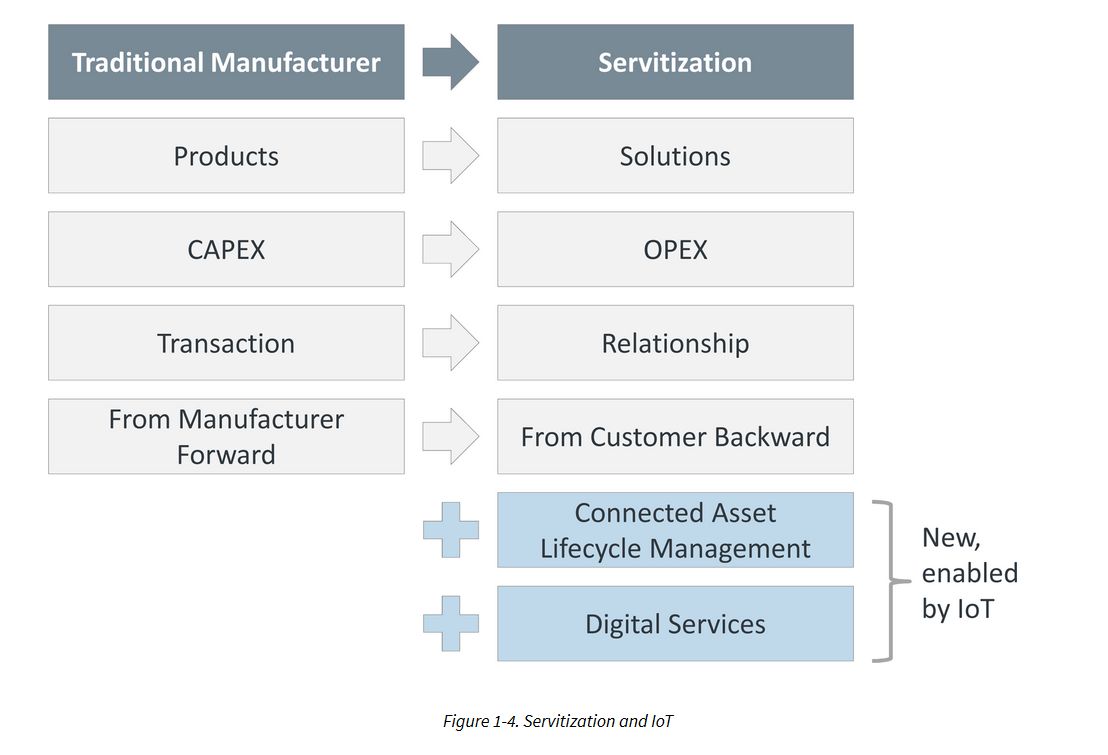
Data monetization (direct or indirect)
-
Direct data monetization consists in selling data - the data is the main asset exchanged for money.
-
Indirect data monetization covers the cases where data enables a transaction, facilitates a partnership,… it is bartered without an explicit price. Its role is to catalyze an exchange. An advantage of indirect monetization is that is should not be taxable, as noted by Doug Laney from Gartner.
c. IoT - which industry is concerned?
According to a leading consulting on the topic, IoT can be mapped in a series of overlapping domains:
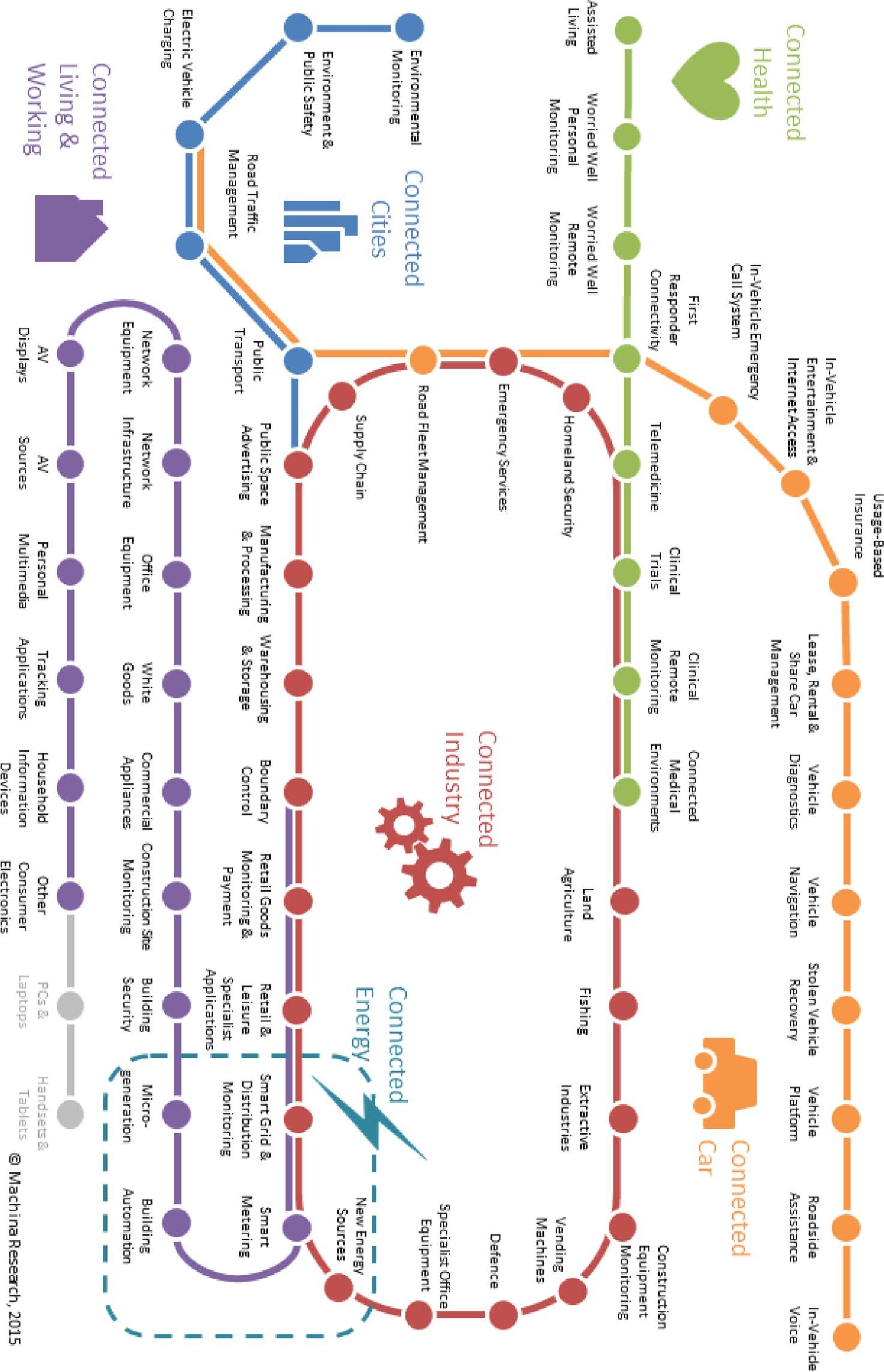
4. The integration of an IoT in the systems of an enterprise
Connected objects do not stand alone and "make a product" or "provide" a service in themselves. They must be integrated to a variety of devices and systems which, altogether, perform a function.
It is possible to draw a general schema of the relations of a connected object with the rest of entreprise systems:
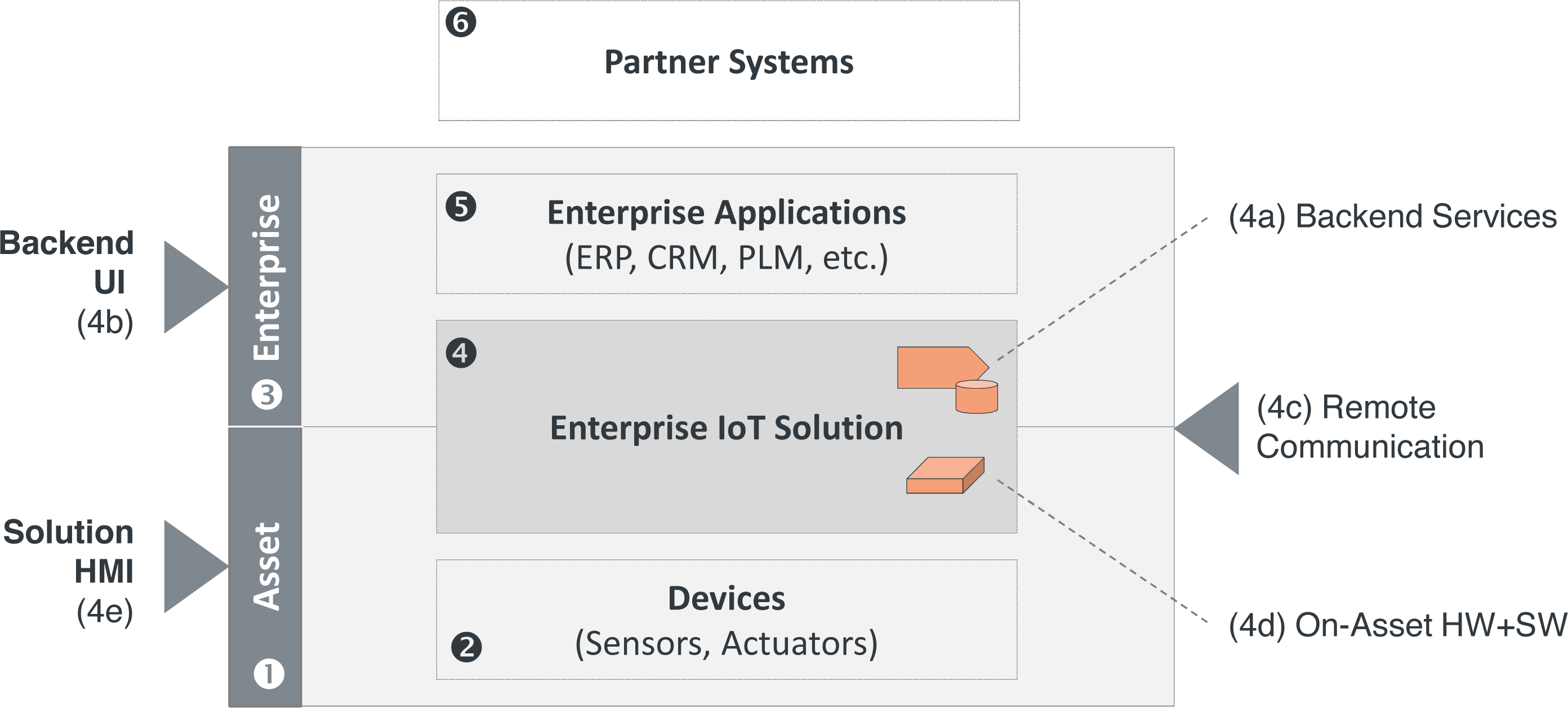
This schema can be used to describe any system involving an IoT. Here, Slama et al (2015) pick the example of an Airbag which, if it is triggered, launches a call from an emergency system to the car driver to make sure everything is fine:
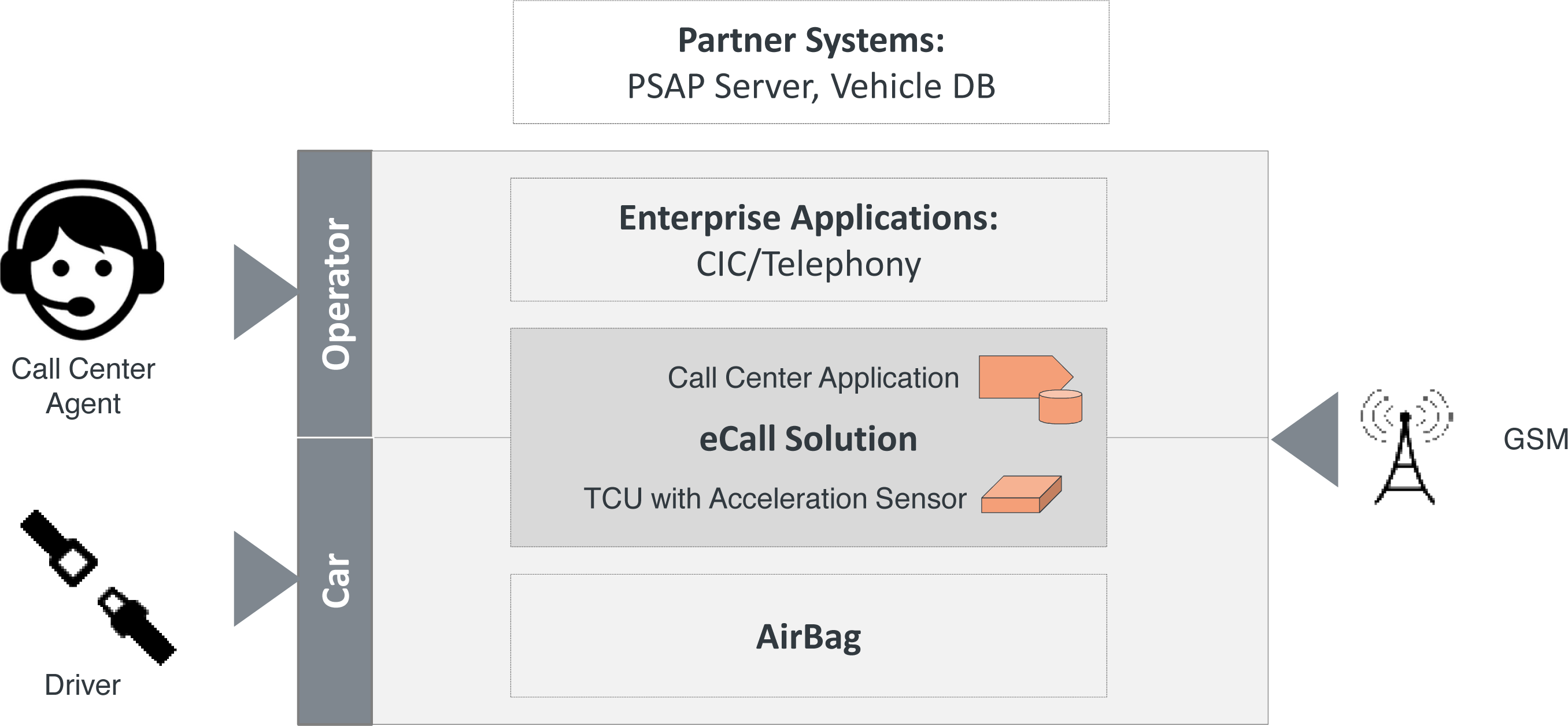
|
5. Finally: IoT, the meeting of two different corporate cultures
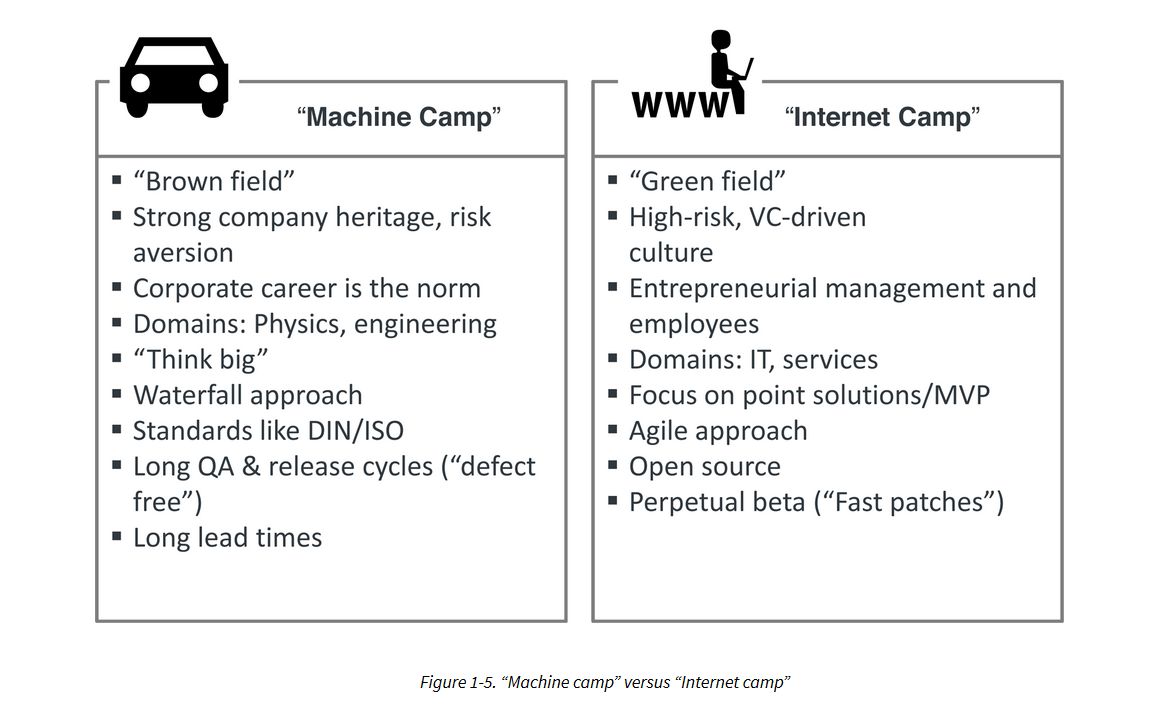
The end
Find references for this lesson, and other lessons, here.

This course is made by Clement Levallois.
Discover my other courses in data / tech for business: https://www.clementlevallois.net
Or get in touch via Twitter: @seinecle

